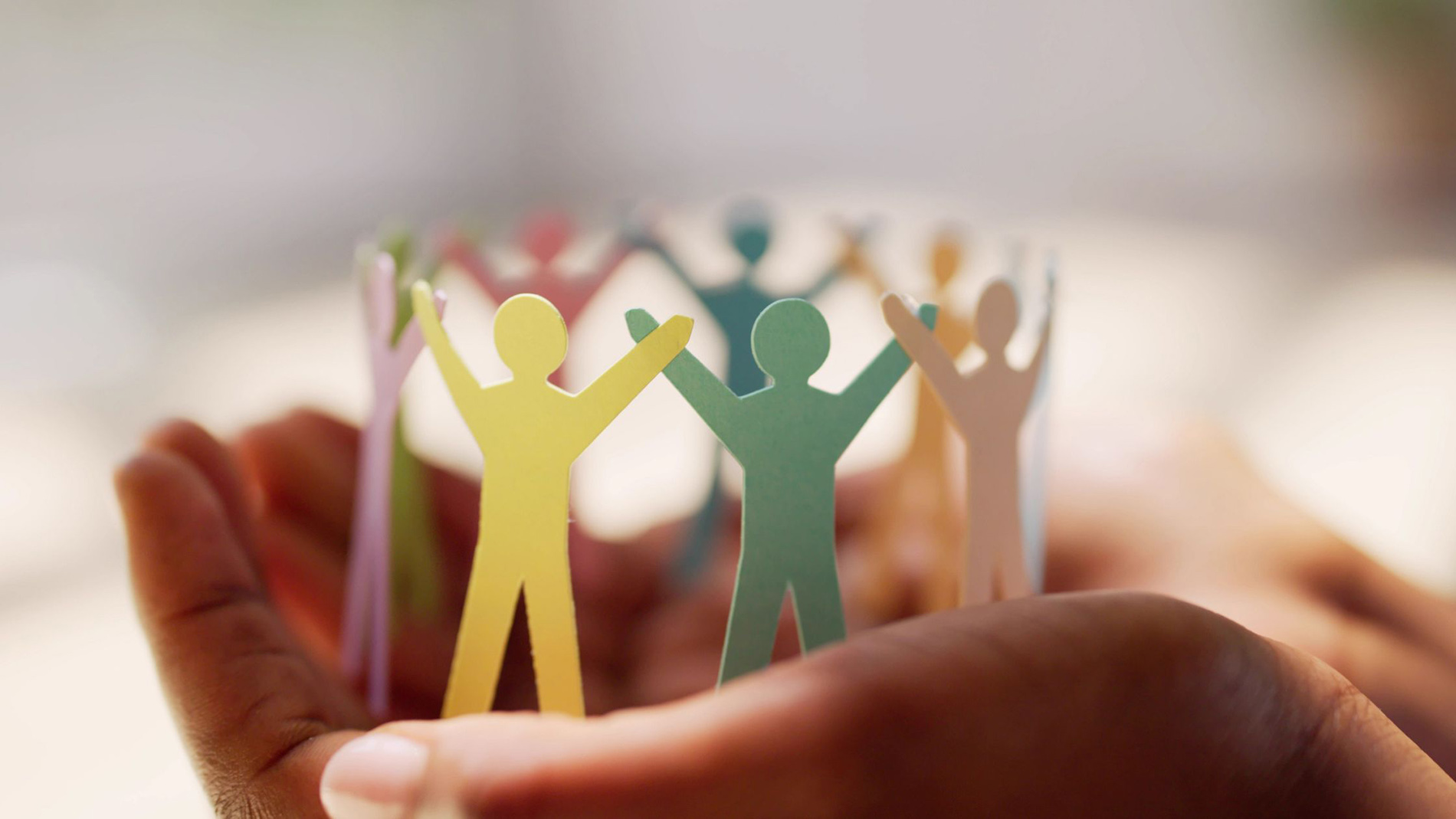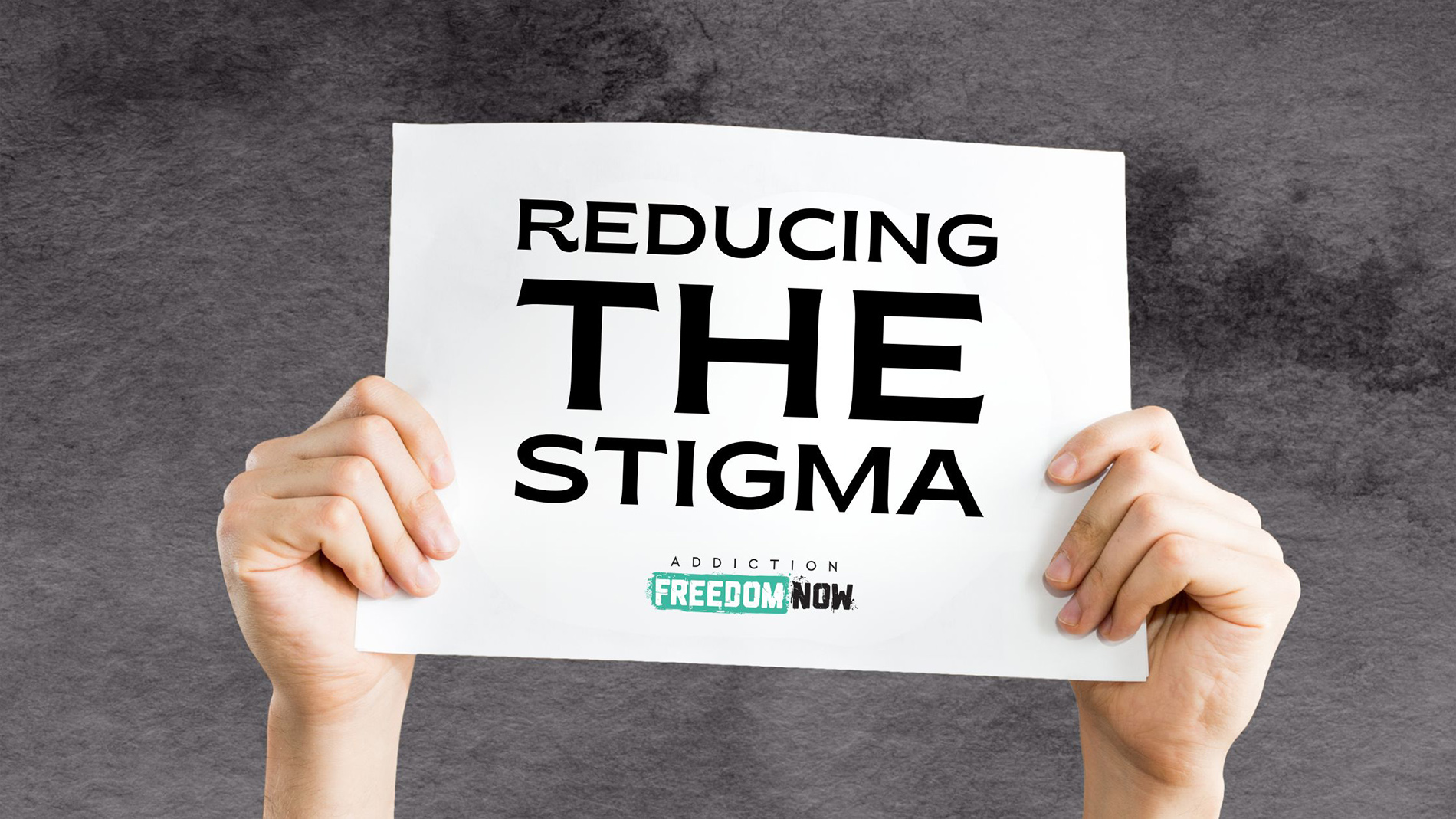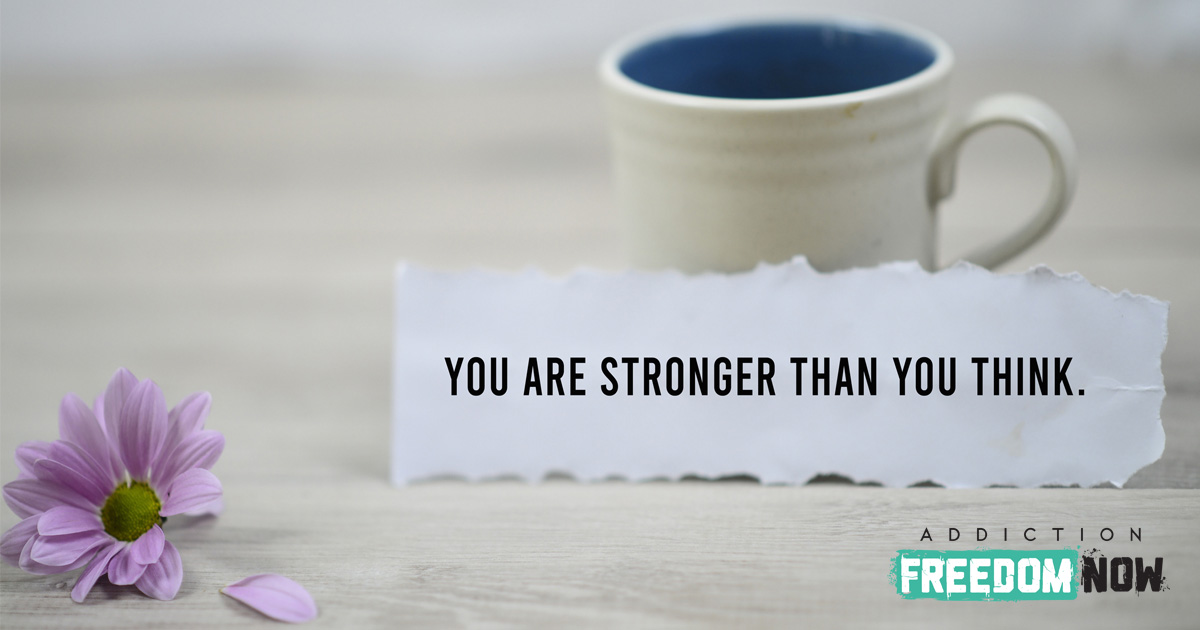Currently, the United States (along with many countries around the world) is in the midst of dealing with one of the biggest public health problems of our time: the effects of substance use disorder (SUD).
SUD can lead to mental health issues and dangerous physical health problems that become more severe the longer substance use continues. The condition can culminate with overdose, which can and does result in death.
As the number of overdose deaths continues to rise, it is important to look into all of the possible ways to fight this problem. Unfortunately, governments at all levels and even everyday citizens often believe that the quickest way to reduce substance use is by punishing or shaming people with SUD. However, as the overdose numbers continue to rise, we are recognizing the importance of how we discuss SUD and act toward the people who experience it.
Reducing the stigma around addiction is a step that can take us closer to our goal of curbing the overdose crisis. By changing how people think about and talk about SUD, we can make it easier for people to get help, treat them better as they get better, and, in the end, decrease the number of overdoses. Together, we can help society become more accepting of people who are dealing with substance use disorders by reducing stigma and changing the way we talk about SUD.
First Things First: How Overdose Works
The ultimate goal of stigma reduction is to save lives, and putting preconceptions aside to learn more about the fatal impact of SUD is arguably the most important step we can take. As a result, countries around the world have instituted strategies like Overdose Awareness Day to help increase knowledge about this deadly occurrence.
Generally speaking, an overdose happens when someone takes more of a particular substance than their body can handle. Depending on the substance involved, an overdose can lead to vomiting, breathing problems, foaming at the mouth, abnormal heart rhythms, cardiac arrest, brain damage, and death. Alcohol, illicit or street drugs, and prescription medications are just some of the chemicals that can cause overdoses.
Just as there are many kinds of substances, there are many kinds of overdoses.
Opioid Overdose
Opioids are natural or chemically manufactured substances that interact with the body’s opioid receptors to reduce pain. They include street drugs like heroin and prescription drugs like morphine, oxycodone, and fentanyl. Some of the signs of overdose are extreme inability to stay awake, loss of consciousness, small pupils, slowed heart rate, blueish or clammy skin, vomiting, and slowed or no breathing.
Stimulant Overdose
Stimulant overdose results from the overuse of drugs like methamphetamine, cocaine, and some prescription ADHD drugs. Since stimulants are designed to increase the messages sent between the brain and body, their effects include heightened physical and neurological reactions. Some of the signs are irritability, paranoia, tremors, high body temperature, seizures, chest pains, and even heart attacks.
Alcohol Overdose
Commonly known as alcohol poisoning, alcohol overdose occurs when the level of alcohol in the blood exceeds safe levels. While moderate levels of alcohol can cause unconsciousness, impaired breathing, and blackouts, alcohol overdose is even more severe. Some of the signs of alcohol overdose include the above plus extreme tremors, vomiting, slow heart rhythm, bluish or clammy skin, seizures, and death.
Depressant Overdose
While alcohol is a nervous system depressant, another class of pharmaceutical medications is more commonly referred to as depressants. These typically include drugs known as sedatives and tranquilizers. The signs of a depressant overdose are similar to alcohol overdose and include drowsiness, feeling lost, slow breathing, slow heart rhythm, seizures, unconsciousness, and death.
How to Spot an Overdose
Recognizing the signs of an overdose right away is extremely important for anyone who has a loved one with SUD because it could mean the difference between life and death. Even if you don’t know anyone with SUD, building awareness without judgment is one of the best ways to help reduce the overdose crisis. Quick action by informed people can help to save lives.
As noted above, different substances can cause different symptoms leading up to an overdose. If you know what substance your loved one is currently using, be on the lookout for the corresponding signs.
In general, however, if you notice these signs, get help right away:
- The person doesn’t wake up or respond to prompts.
- The person’s breathing is weak, slow, or stops completely.
- Some parts of the person’s skin are blue or gray, especially around the lips and fingers.
- The person is making coughing sounds, which often means an airway is blocked.
- The person seems to be asleep and can’t be woken up.
Calling 911 is a key first step when someone has overdosed. In recent years, reducing stigma has also resulted in the large-scale proliferation of a critical tool to reverse opioid overdose: naloxone, or Narcan. If you believe the person is experiencing an opioid overdose, administering Narcan can save their life; perhaps just as importantly, Narcan will not harm individuals experiencing another medical emergency if administered prematurely.
Addressing the Stigma and Shame Surrounding Substance Use Disorder
Reducing the stigma surrounding addiction and substance use disorder is crucial in encouraging people to learn about SUD and overdose, thereby helping all involved recognize and prevent overdose. However, stigma reduction can positively impact people at all stages of SUD.

For example, many people avoid seeking the help they need because of the stigma that surrounds SUD. Avoiding help can make it difficult to impossible for people to truly heal, a phenomenon that can keep people mired in the depths of SUD. So, what, exactly, is stigma?
Stigma is commonly defined as a feeling of disgrace or shame that is commonly associated with a particular situation. When it comes to SUD and overdose, this stigma comes in many forms, such as social stigma, self-stigma, and structural stigma.
Social Stigma
A person with a substance use disorder faces social stigma when other people think poorly and make negative assumptions about them. People experiencing social stigma may face discrimination, social exclusion, and judgmental behavior, which can make them feel alone and helpless and can lead to mental health symptoms. People with SUD may find it hard to ask for help because they are afraid of being judged by others who may see them as morally flawed.
Self-Stigma
People experience self-stigma when they believe negative ideas and social stereotypes about substance use disorder. In addition to the feelings of loneliness and helplessness spurred by social stigma, self-stigma can lead to shame and guilt. This kind of internalized stigma can be very harmful because it can cause people to feel unworthy of help and compassion, further preventing care and healing.
Structural Stigma
Structural stigma refers to the rules, laws, and social norms that make it harder for people with SUD to get help. This can include roadblocks to medical and mental health care, being discriminated against at work, and a lack of support services. Even individuals who successfully deal with social and self-stigma and seek help can feel defeated by structural stigma that prevents healing from occurring.
To effectively implement stigma reduction, it is necessary to address all three types of stigma. Successful stigma reduction must be a broad approach that includes education, advocacy, and changes to the law. While these changes must take place on a societal and governmental level, there is something you can do to begin reducing stigma right now: change the language you use surrounding addiction or SUD.
Changing The Language Around Addiction
Language is a very important part of how people perceive and act about substance use disorder. The words we use can either perpetuate stigma or foster understanding and compassion. By changing the way we talk about substance use disorder, we can help change how people view those currently experiencing it. Eventually, we can make the world a better place for people who are recovering.

Let’s explore some ways we can change the language around addiction.
Changing the Way We Refer to People
People are people first and should not be defined by their medical conditions or struggles. It’s crucial to use person-first wording that focuses on the person instead of their substance use disorder. Saying things like “person with a substance use disorder” or “individual experiencing SUD” helps remind us that they are human and takes away the negative connotations that come with substance use disorder. Let’s work together to eliminate terms like “junkie” and “addict” that focus only on the substances people are using.
Changing the Way We Refer to the Condition
While addiction was once the term used to describe SUD, we’ve since realized that it labels the condition and the people it affects by referring to their behavior, not the medical condition that underlies it. We can reduce stigma by using more accurate words and phrases that describe the medical and psychological challenges and complexities of this condition without reducing the value of the humans who experience them.
Here are some other words for addiction:
- Substance Use Disorder (SUD) – This is the clinically correct term for the mental health condition that impedes people from controlling their substance use. It stresses that this is a medical condition and not just a behavior.
- Substance Misuse – This term recognizes that drugs are being used in an improper manner and is a way to describe the behaviors surrounding SUD without the dehumanizing aspect. Terms like substance abuse paint both the person and the behavior in a negative light.
- Chemical Dependency – This term emphasizes the medical side of SUD by focusing on the physiological need for the chemicals in substances to stave off negative symptoms.
- Behavioral Health Disorder –This more general term includes a wide range of mental health disorders, including SUD, and draws less attention to substance use itself.
- Recurrence – While professionals once used relapse as a term to describe a situation where a person in recovery resumes using substances, it’s important to note that this is very often a part of the progression of a medical condition. Just as we use recurrence to describe the return of other medical diseases, we can also use it to describe the return of substance use.
Changing the Way We Refer to Institutions
Additionally, it is important to use words that emphasize the fact that substance use disorder is medical in nature. Substance use disorder is a long-term brain disorder, not a moral flaw or a lack of willpower. While rehab may have only gained a negative connotation because of terms like addiction and substance abuse, other terms may help to reduce the stigma. Treatment may be a more accurate, more positive term that focuses on the active work toward healing involved. Recovery refers to the lifelong state the individual reaches the moment they begin receiving help and continues throughout their journey away from active substance use.
The Next Step: Working Together to Eliminate Stigma

After we learn the proper terminology to use surrounding SUD, we can better understand societal efforts to eliminate stigma. While you may not be able to institute these efforts on your own, you can support organizations working to eliminate stigma by volunteering, donating, or even spreading the word about their efforts. Here are some of the most important things going on right now:
Campaigns for Education and Awareness
Campaigns to teach the public about SUD can help debunk myths and false beliefs. SUD is a long-term brain disease that requires specialized treatment and support for recovery. The messages the public receives about SUD should focus on the science behind SUD. Sharing real stories of recovery can also help make the problem more relatable and help eliminate shame and complacency.
Training for Healthcare Professionals
Healthcare professionals are very important when it comes to providing resources and treatment for SUD without shame or judgment. Providers must receive education that helps them treat people with drug use disorders in a caring, nonjudgmental way, a goal that can be reached by the development and implementation of training programs. Important topics can include everything from medical knowledge to the critical nature of person-first language and the ways stigma can affect patient outcomes.
Peer Support Programs
Peer support programs, in which people who are in recovery help and guide others, can be very successful at reducing stigma. People can share their stories and get support from others who have been through the same thing in a safe and non-judgmental place. The ability to learn and receive guidance from others helps people recognize that they are far from the only ones who have experienced SUD, reducing shame and providing hope for a better future.
Policy Changes
It’s important to push for policy changes at the neighborhood, state, and national levels to reduce structural stigma. This can be done by making it easier for people to access treatment and recovery programs, putting harm reduction strategies in place, and addressing the social aspects that may make SUD more likely.
Community Involvement
Getting a broad range of people involved at every level is crucial for reducing the impact of shame and stigma. This can be done by planning events for the community, setting up support networks, and encouraging people to talk openly about SUD. By getting the community involved, we can help create a more caring and supportive environment for people, whether they are in the midst of SUD or in recovery.
Circling Back: How We Can Reduce Overdose
The critical nature of the overdose epidemic means that learning to recognize and address overdose when we see it is one of the most important tasks we face as a society. However, any conversation about reducing stigma must eventually circle back to what we can do to reduce overdoses before a life-or-death situation arises. Eliminating roadblocks so people can access emergency, short-term, and long-term help – including harm-reduction techniques – is crucial for reducing the risk of overdose.

Increasing the Availability of Narcan
Naloxone, brand name Narcan, is a drug that can reverse an opioid overdose and save lives. Making naloxone easier to obtain by concerned members of society and teaching people how to use it can help reduce overdose deaths. Naloxone distribution programs have been set up in many areas to make sure that people who are at risk of overdosing and their loved ones can easily get this medicine. In some areas, Narcan vending machines are available to help members of the public assist people experiencing an opioid overdose.
Building Acceptance for Medication-Assisted Treatment
While the eventual goal of treatment is to eliminate the use of drugs, many people avoid seeking treatment for fear of the physical and mental health effects of withdrawal; many others experience a recurrence (formerly called a relapse) due to the strong chemical dependency associated with SUD. Medication-assisted treatment (MAT) employs the use of therapeutic medications like methadone, buprenorphine, and naltrexone to cut down on withdrawals and reduce urges. Along with counseling and behavioral therapies, MAT can help people who have a substance use disorder reduce the risk of a recurrence and overdose.
Creating and Accepting Sites for Supervised Consumption
As mentioned, the ultimate goal is to eliminate the risk of overdose, which means ceasing the use of substances entirely. However, until people are equipped to accept help, supervised consumption sites can ensure they are using substances in a safe and supervised setting with medical staff on hand in case of overdoses. Supervised consumption sites can cut down on overdose deaths and also work to link people to treatment and support services.
Developing Other Harm Reduction Strategies
While supervised consumption is one type of harm reduction strategy, there are others that focus on the dangers of drug use besides overdose. Programs that encourage people to turn in used needles and provide education about safe injections are examples of harm reduction strategies that can reduce the harmful effects of substance use. Prioritizing general health and safety can help people maintain health and attain resources for care and other support services.
Increasing Access to a Full Range of Treatment and Support Services
Reducing the number of overdose deaths requires improved access to complete care and support services. This includes finding ways to provide affordable treatment, increasing the availability of mental health services, providing help with the roadblocks caused by everyday living, lending assistance with finding work and increasing access to social services. Taking care of the underlying problems that lead to SUD can help people reach and stay in recovery, which reduces the risk of overdose.
Together, Our Efforts Are Important

Reducing stigma is an important step you can take to help cut down on the impacts of SUD, including overdose. Changing the way we talk about SUD, educating people, and instituting laws and practices that help people with a substance use disorder are all a part of a concerted effort to encourage people to get the help they need and eliminate roadblocks to recovery. This work continues to evolve, and so does Addiction Freedom Now – together, we can promote efforts that range from using compassionate language to advocating for improved laws.
Resources:
- Office of Addiction Services and Supports. (n.d.). Overdose prevention. New York State. Retrieved August 21, 2024, from https://oasas.ny.gov/prevent-overdose
- Health Service Executive. (n.d.). How to identify an overdose. Retrieved August 21, 2024, from https://www.hse.ie/eng/services/publications/socialinclusion/addiction/identifyanoverdose.html
- National Institute on Drug Abuse. (n.d.). Words matter – Terms to use and avoid when talking about addiction. Retrieved August 21, 2024, from https://nida.nih.gov/nidamed-medical-health-professionals/health-professions-education/words-matter-terms-to-use-avoid-when-talking-about-addiction




